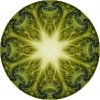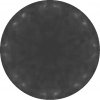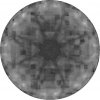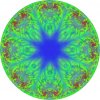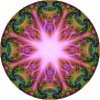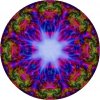Robin_Claassen
New Member
- Messages
- 4
- Likes
- 2
What I'm trying to do is stretch out the green part of the color spectrum that includes most of the pixels in this image
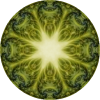 .
.
, so that the redder colors are shifted in the red direction, the bluer colors are shifted in the blue direction, and only the the pixels the are in a narrow range around the mean color of of the original image stay green.
What I'm doing is trying to convert it into blocks (basically pixels) in Minecraft (a computer game that emphasizes creative expression through building with virtual blocks) through a third-party image-to-Minecraft-blocks program, in a manner that preserves as must detail as possible. Unfortunately, since there are a limited number of different Minecraft blocks in the green part of the spectrum, much detail is getting lost in the conversion (example:
 ).
).
So I think that what I need to do is make it so that greater portion of the color spectrum is used by the image, so that a greater portion of Minecraft's limited color palette can be used, and more detail can be preserved.
I'm guessing that there's a way to do that in Photoshop, but despite spending some time searching (probably using the wrong search terms), I haven't been able to find how to do so. If anyone could help me, I'd appreciate it. Thanks!
 .
., so that the redder colors are shifted in the red direction, the bluer colors are shifted in the blue direction, and only the the pixels the are in a narrow range around the mean color of of the original image stay green.
What I'm doing is trying to convert it into blocks (basically pixels) in Minecraft (a computer game that emphasizes creative expression through building with virtual blocks) through a third-party image-to-Minecraft-blocks program, in a manner that preserves as must detail as possible. Unfortunately, since there are a limited number of different Minecraft blocks in the green part of the spectrum, much detail is getting lost in the conversion (example:
 ).
).So I think that what I need to do is make it so that greater portion of the color spectrum is used by the image, so that a greater portion of Minecraft's limited color palette can be used, and more detail can be preserved.
I'm guessing that there's a way to do that in Photoshop, but despite spending some time searching (probably using the wrong search terms), I haven't been able to find how to do so. If anyone could help me, I'd appreciate it. Thanks!
Last edited:




